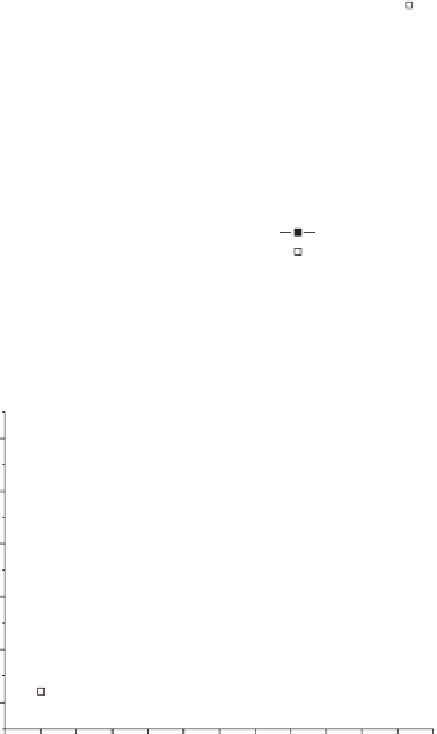Biomedical Engineering Reference
In-Depth Information
35
30
25
20
15
10
PAH/PAA 70 k/240 k
PAH/PAA 15 k/5 k
5
0
1
2
3
4
5
6
7
Number of layers
(a)
14
12
10
8
6
PDADMAC >500 k
PDADMAC 30 k
4
0
1
2
3
4
5
6
789
10
11
12
Number of layers
(b)
Figure5.7
Adsorbedamount ofPDADMAC(7b, 30kand
>
500k) andPAH(7a,15kand
70k)onwoodfibres, determinedusingnitrogenanalysis (ANTEK) andplottedasa function
of thenumberof layers.Thefibresweretreatedwithabackgroundelectrolyteconcentration
of0.1MNaCl forPDADMACandin0.01MNaCl forPAH.Datafrom(27,29,35).
seen in Figure 5.8, a higher electrolyte concentration leads to a higher adsorption. This
is probably due to a more extensive adsorption of PDADMAC and PSS into the porous
fibres due to a coiling of the polyelectrolytes at higher salt concentrations. These results
are also in accordance with earlier published data (38) where it was shown that the
adsorption of PDADMAC increases significantly as the salt concentration is increased.
This was explained as being due both to a penetration of the polyelectrolyte into the fibre
wall, making a larger surface area available for the polyelectrolyte, and to an increased




















Search WWH ::

Custom Search